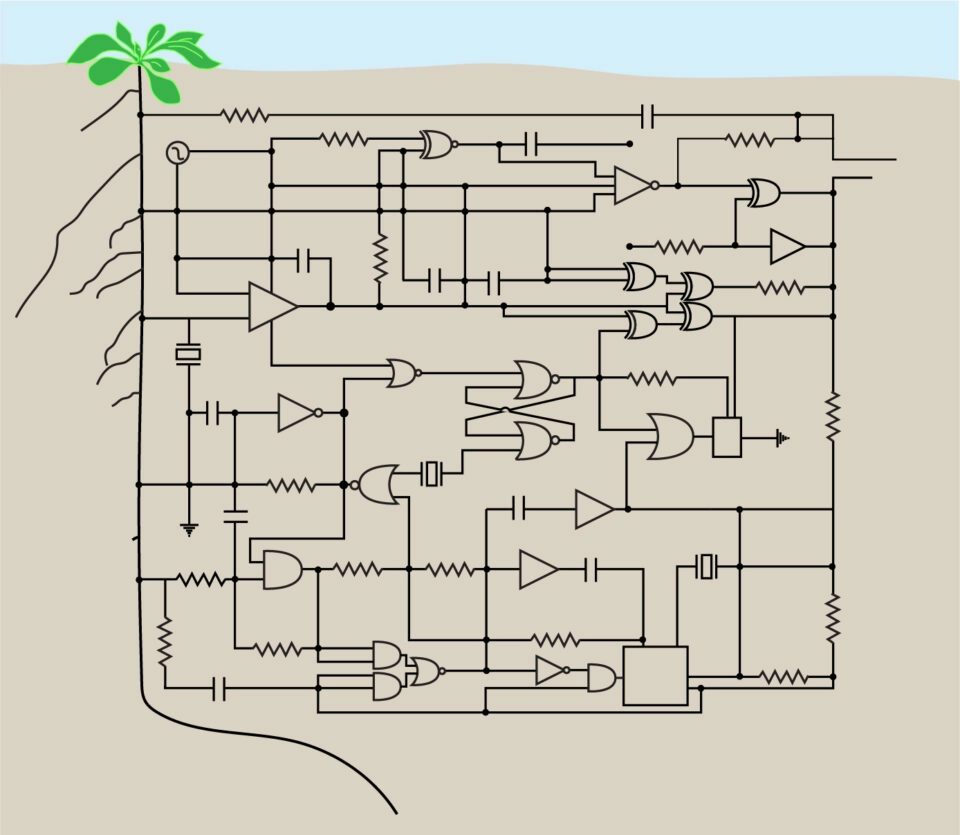Products You May Like
Geneticists at Stanford University have figured out a way to carefully control the structure of plant roots as they grow and branch.
By manipulating the depth and shape of a burgeoning root system, researchers hope they can one day reprogram crops to make them more resilient in the face of climate change.
A shallower root system, for instance, could help crops better absorb phosphorus near the surface. Whereas a deeper root system could be better for collecting water and nitrogen.
“Our synthetic genetic circuits are going to allow us to build very specific root systems or very specific leaf structures to see what is optimal for the challenging environmental conditions that we know are coming,” explains bioengineer Jennifer Brophy from Stanford University.
“We’re making the engineering of plants much more precise.”
The genetic techniques Brophy and her colleagues use to achieve such high precision could potentially reprogram plants much faster than they can otherwise adapt and more precisely than they can be cultivated for desirable traits.
Using a tobacco plant’s cells, researchers created a synthetic genetic circuit that controls gene expression – and showed how it works in another plant.
You can imagine the genetic circuit much like a computer code with logic gates. Only the right input values can enter the gate and produce an output.
These biological circuits are also similar to electrical circuits with switches, like the ones that power your phone.

In a cell, these gates, which ultimately lead to genetic expression, can only be opened by synthetic transcriptional ‘promoters’ that are specific to certain plant tissues. This means researchers can potentially control which cells in a plant express which genes, changing how the plant grows.
When creating a series of synthetic logic gates for a single gene associated with lateral root development, researchers were able to manipulate the growth of a small weedy plant, known as Arabidopsis thaliana.
By changing the expression of that one gene, researchers altered the density of branches in the plant’s root system without affecting other root properties.
That’s a big achievement because another study previously showed how small changes in that one root development gene can affect all sorts of root properties, such as root hair development or primary root growth.
“To disentangle root branching from other developmental processes, we expressed the slr-1 mutant gene using a tissue-specific promoter that is only on in lateral root stem cells,” the researchers write.
Next, the authors plan to test their reprogrammed genetic circuits on sorghum, which is a unique crop that shows promise as biofuel. The team hopes to improve sorghum’s ability to absorb water and perform photosynthesis more efficiently.
If this genetic technique turns out to be effective, its possibilities are limitless. Reprogramming crops using synthetic genetic circuits will, however, require careful tuning.
“We have modern varieties of crops that have lost their ability to respond to where soil nutrients are,” says plant biologist José Dinneny, also from Stanford.
“The same sort of logic gates that control root branching could be used to, say, create a circuit that takes into account both the nitrogen and phosphorus concentrations in the soil, and then generates an output that is optimal for those conditions.”
The study was published in Science.
